Humans have been shucking shellfish for a long, long time.
English settlers first exploring the coast of New Jersey described copious mounds of clam shells, dined on by local Native Americans. The earliest evidence, however, of homo sapiens eating shellfish was discovered in a South African cave. This is thought to be proof of the first consumption of clams over 164,000 years ago!
And we haven’t stopped eating them since.
To be a clam is to be a “bivalve.” Two equal shells joined at the top that are closed by two adductor muscles. As adults, clams spend their lives burrowed into mud and sand in “intertidal” zones. These are shoreline areas that are exposed during low tide.
Sea Spawning
As clams stay put in the muck or sand, they reproduce by “broadcast spawning.” During the spring warm-up, both eggs and sperm are released into the water. Female clams can produce a lot of eggs, sometimes millions during a single spawn.
Should fertilization occur, a larval clam will be created. These “babies” float along with the currents, growing daily. While still incredibly small, if the little clam is lucky, it will be transported by waves and tide to a good location to burrow near the shoreline.
A Researchers Uh-Oh Moment
The age of a clam can be determined by counting the rings, or lines on its shell just as you would a tree. In 2006 the oldest living animal ever found was a hard-shell ocean quahog clam (Arctica Islandica) named Ming, which was discovered to be 507 years old. Found off the coast of Iceland, Ming was inadvertently killed by researchers when it was frozen.
These days, most of the shellfish provided to restaurants and stores is farmed. Clams are grown in designated leased areas in the water and harvested when they grow to the right size. But many a shore community on the East Coast has a long tradition of “Baymen” who have made a living clamming with boats in the water and digging along the shore.
Clams found on the East Coast have a variety of names, but basically, there are two main types: hard-shell (Mercenaria mercenaria) also called quahogs, and soft-shell (Mya arenaria). The different names they’re called reflect their size at harvest. Within those two categories, however, there are things you need to know depending on how you’ll be using your clams. If you decide to try your hand at clamming, a license is probably required. You’ll also need to know how many you’re allowed to take. And don’t forget a bucket and a clam rake!
Littleneck
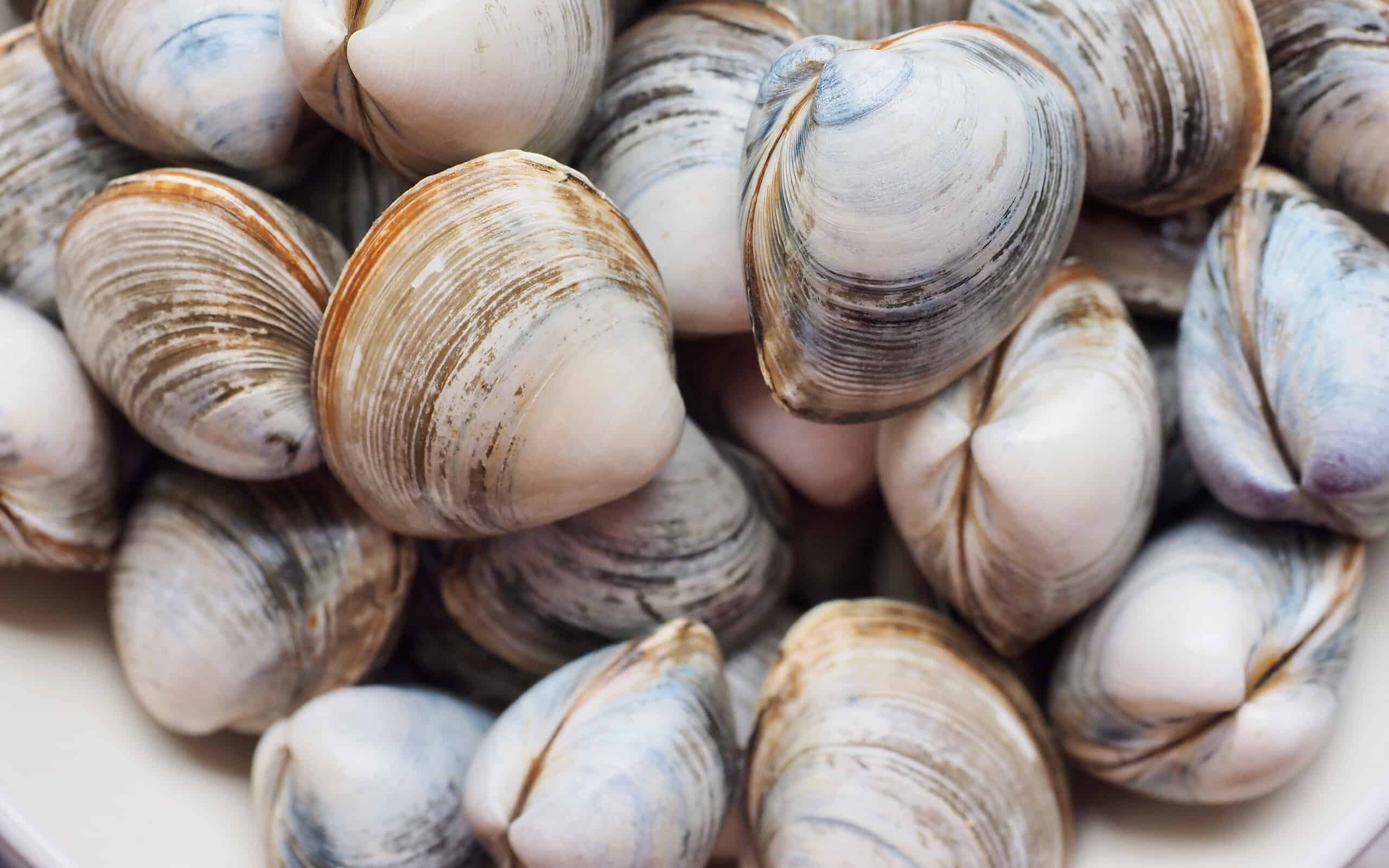
Littlenecks are under two inches wide, the smallest hard-shell clams.
©SUNGSU HAN/iStock via Getty Images
Hard-shell clams called littlenecks are 1 1/2 to 2 inches in size. They are the smallest quahogs and usually the sweetest!
A favorite for steaming, littlenecks are typically served with a hot bowl of clam broth to dunk them in and warm melted butter. When steamed, they are ready to eat as soon as the shells pop open. These are also the clams of choice for eating raw on the half shell.
If you’re looking for littlenecks at the shore, they’re easily recognizable by their small size and shell rings. If you find some undersized ones, put them back so they can continue to grow. It’s illegal to harvest clams that are too small, and states have specific size minimums. In New Jersey, for example, hard-shell clams smaller than 1 1/2 inches must be put back immediately.
Littlenecks are found in intertidal areas with the best clamming done at extremely low, or “blowout” tides.
Topneck
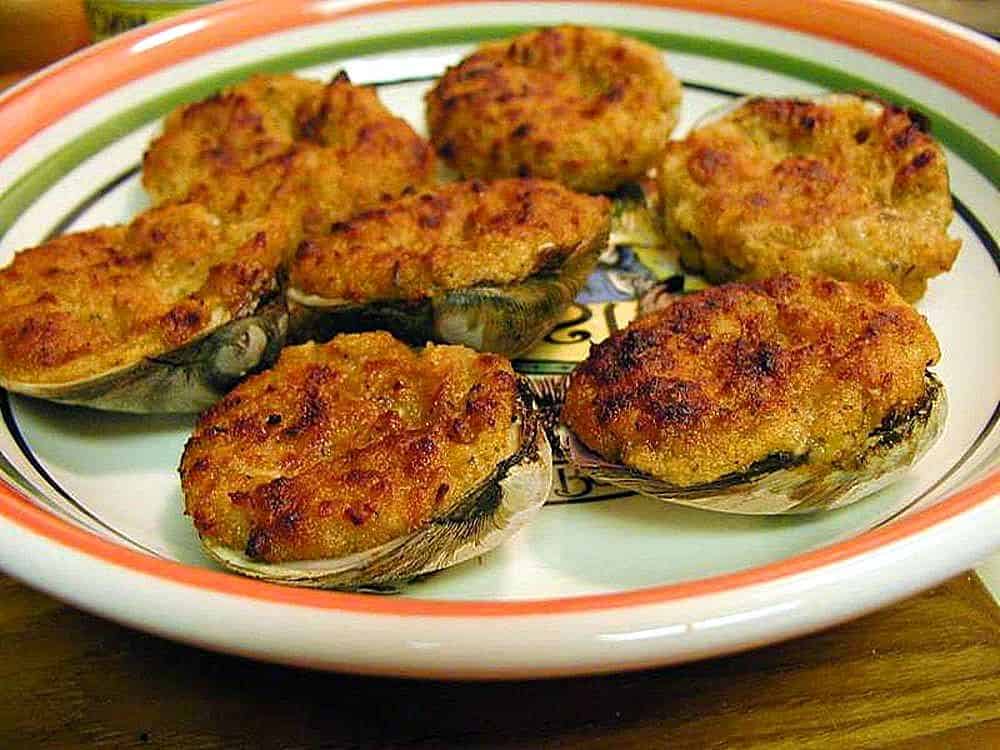
Clams sized to be called topnecks are perfect for making baked clams.
©Jon Sullivan, Public domain, via Wikimedia Commons - Original / License
Hard-shell clams are called topnecks based on having a width of 2 to 3 inches. Due to their smaller size, topnecks are also eaten raw and make for perfect baked clams.
Whether you’re clamming or buying your shellfish at a seafood market, make sure to keep them refrigerated. But don’t store your clams in plastic bags, airtight containers, or in water. When steaming, discard any clams that don’t open. If the shell is open slightly before cooking, give it a tap. Should the shell not close, the clam is dead and should be discarded.
Also, discard any clams with cracked or damaged shells.
Cherrystone
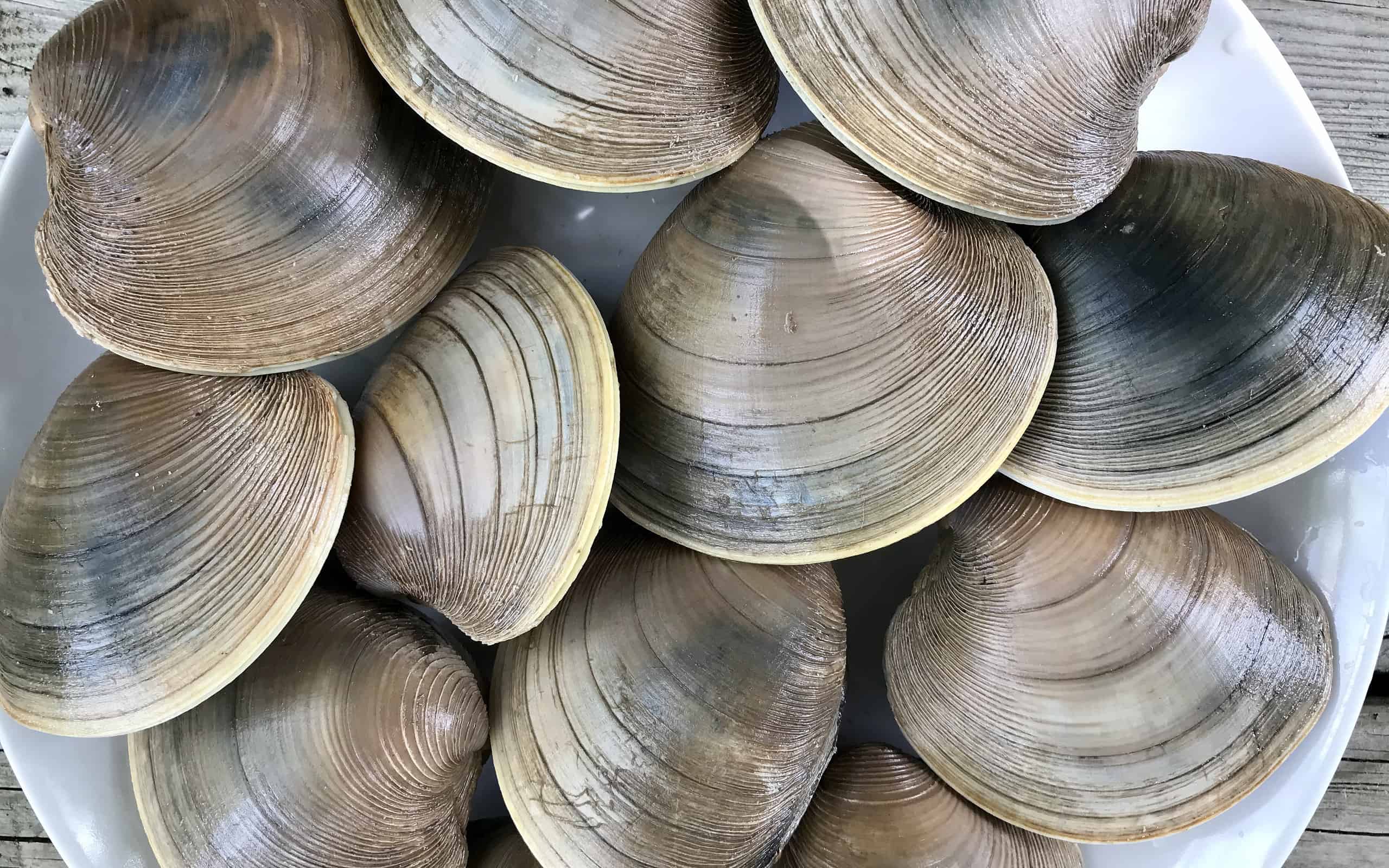
Cherrystone clams are popular picks for making clam cakes and chowder.
©eastriverstudio/iStock via Getty Images
Also categorized as hard-shell clams, cherrystones are bigger than topnecks at around 3 to 4 inches wide.
Found along the East Coast of North America from Canada to Florida, cherrystone clams are often used to make chowder and clam cakes. The smaller-size ones are also popularly eaten raw on the half shell.
Like oysters, larger hard-shell clams can also contain pearls. One customer of a Delaware restaurant bit down on something hard while eating a cherrystone that turned out to be a pink pearl. Valued at more than $4,000, it wasn’t the first pearl to come out of a clam. Clam pearls of purple, pink, and grey have all been found, some quite valuable.
Like most other hard-shell clams, cherrystones are found in the top three inches of sand and mud areas that have regular tides.
Chowder Clam

Large chowder clams can be tough, which is why they are used in recipes where they will be chopped into smaller pieces, such as chowder.
©bhofack2/iStock via Getty Images
Chowder clams, also called quahogs, are typically over four inches wide.
If you find a large chowder clam at the beach, know that it could easily be 30 years old. It takes a long time for clams to grow. Littlenecks, for example, have been growing for around three years to reach their petite size.
These hefty hard-shell clams are mostly used in dishes like chowder and clam fritters. The bigger the clam, the tougher it is. That’s why these mighty mollusks are usually chopped up for cooking. Overcooking clams can make them even tougher, which is why steamed and chopped clams are added to soups and chowders right before serving.
Atlantic Surf Clam
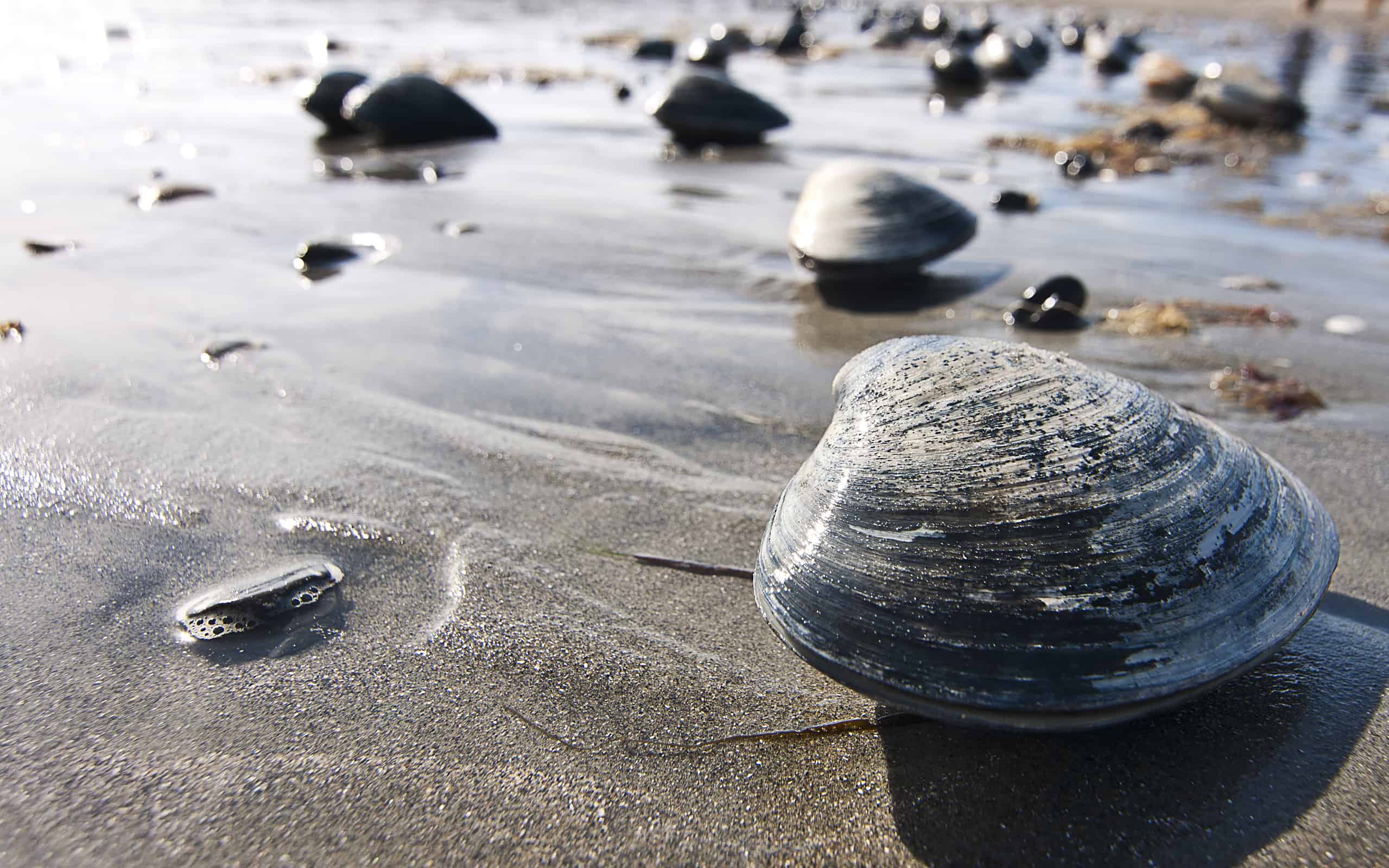
Atlantic surf clams are used in canned chowders and soups and commercially prepared clam strips.
©southlandp/iStock via Getty Images
These giants of the culinary clam world can be huge, often over seven inches wide. They are the largest of hard-shell clams.
Practically any trip to the beach, especially after a storm, will turn up Atlantic surf clam shells worth admiring. These big daddies of the shellfish world don’t care for the muddy flats that other quahogs do. They prefer open, moving water and will bury themselves below the sediment surface.
Surf clams, like all bivalves, are “filter feeders.” They take in water, straining out nutrients to feed on. Because of the way clams eat, they are very susceptible to contamination in polluted waters, which is why care has to be taken where you dig your clams.
Due to their size, they are used in most commercial chowders, stews, and soups. In the 1950s the restaurant chain Howard Johnson’s popularized Atlantic surf clams in its famous clam strip sandwich.
Atlantic surf clams can be found from the southern portion of the Gulf of St. Lawrence in Canada to Cape Hatteras in North Carolina. They are most abundant, however, on Long Island’s south shore, the New Jersey coast, and the Delmarva Peninsula. Other names they go by are hen clams, bar clams, and sea clams.
Coquina Clam
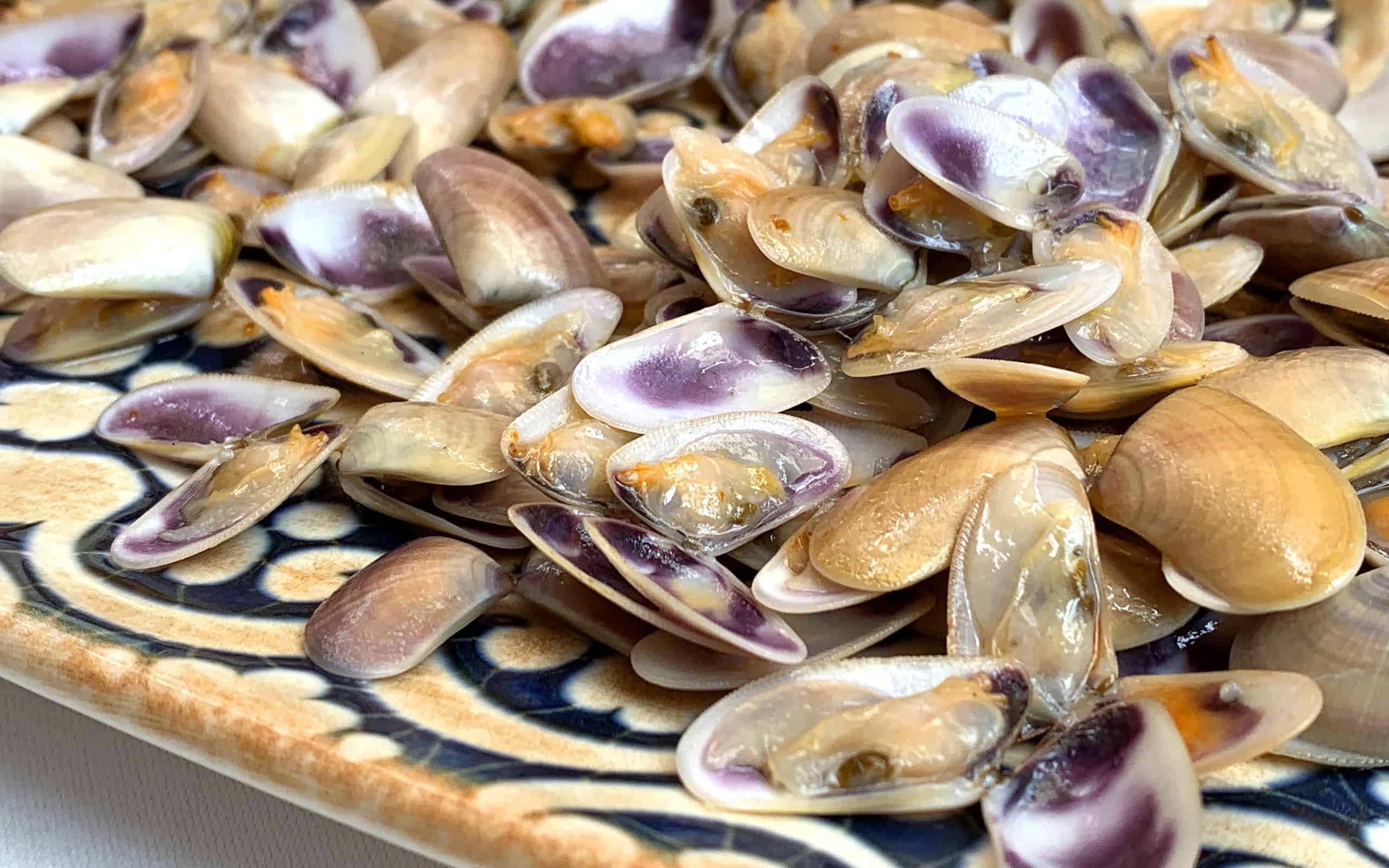
Tiny coquina clams sport shells in a wide variety of colors from purple and pink to yellow and blue.
©MiniMoon Photo/iStock via Getty Images
If you’ve ever walked the shores of an East Coast beach, you’ve seen these colorful, tiny clams emerge when an incoming wave washes over the sand. Then, just as fast they will burrow back down.
Known for their beautiful, multi-colored shells, coquina clams (Donax variabilis) can be found on the East Coast from New Jersey down to the Florida Keys.
Riding the waves, these multicolored mini-clams take advantage of tidal action to bring them to the shoreline. There they dig down in the sand to feed. When the tide retreats, they go with it.
Growing no bigger than an inch, and typically much smaller, coquinas are edible and quite delicious. Being so small, however, it takes quite a few to make a meal! They also can retain a lot of sand, so they need to be purged before cooking.
Coquinas play a vital role as food for shorebirds, crabs, and fish. They are also considered important indicators of a healthy coastline.
Soft-shell Clam
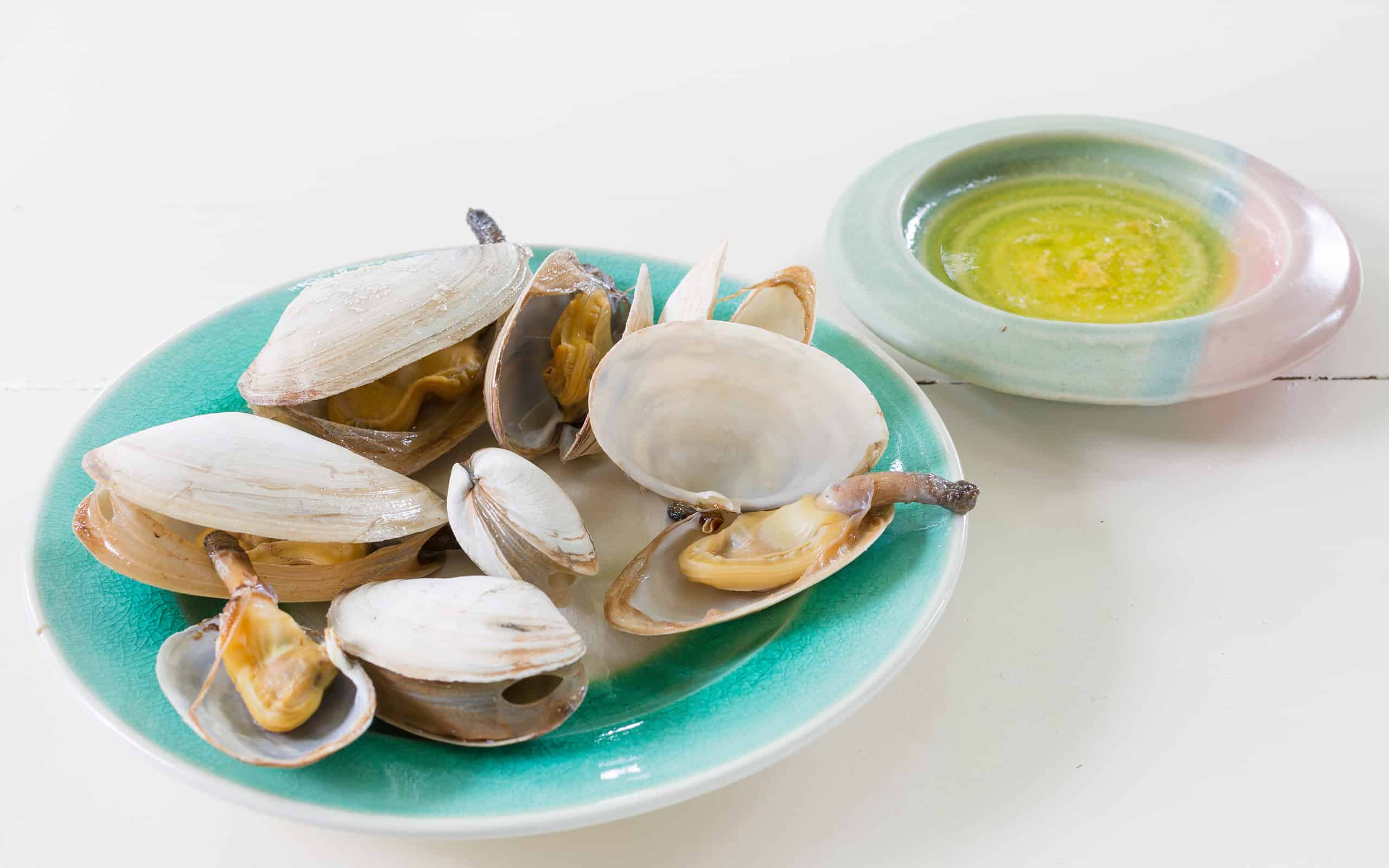
Soft-shell clams, or steamers, are the main event in a New England clam bake.
©onepony/iStock via Getty Images
These mollusks are considered the king of steamed, grilled, and fried clam dishes. The only way you won’t see them served is raw.
Growing up to four inches in length, soft-shell clams are found on the East Coast from Canada to Cape Hatteras, North Carolina. These mollusks live in the soft sediments at intertidal zones, the wet areas of the beach at low tide. They bury themselves in the sand extending their siphons to take in seawater for oxygen.
Once an adult burrows into the sand, it stays put. If displaced, it can only move vertically and won’t be able to dig down into the sand again.
People aren’t the only ones who enjoy soft-shell clams. They are also dined on by blue crabs, horseshoe crabs, ducks, and rays. One of the more unique features of these clams is that they cannot fully retract their siphons.
They are also called steamers, and Ipswich clams.
Atlantic Jackknife Clam

The Atlantic jackknife clam can dig, swim, and jump.
©Tas3/iStock via Getty Images
There’s no mistaking a jackknife, or razor clam (Ensis directus). Looking like its namesake, an old-fashioned straight razor, these long shellfish can be dug at low tide up and down the East Coast. That is, if you’re fast enough!
One of the amazing features of the jackknife clam is the speed at which it can dig down in the sand. Studied extensively by Dr. Amos Winter when he was a graduate student at MIT, this speedy clam can burrow down over two feet in around a minute.
Considered a soft-shell clam, the jackknife is also able to “swim” by pushing water out of its shell. This moving mollusk has an opening at the top for its siphon and another at the bottom where its digging foot protrudes.
Jackknife clams can be cooked in their shells in a frypan, steamed, or broiled. If you’re quick enough to dig some, bundle them up for transport so they don’t jump around and crack their shells. And it’s no surprise that the edges of their shells are sharp!
As with digging or raking for any kind of shellfish, make sure you have the necessary license and know the limit you can harvest. Also, be aware of any local restrictions due to algae toxins or pollution.
The photo featured at the top of this post is © IJPhoto/iStock via Getty Images
Thank you for reading! Have some feedback for us? Contact the AZ Animals editorial team.







